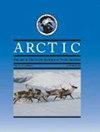美国将北极熊列为濒危物种后,加拿大西部北极地区三个北极熊亚种群的收获组成变化
IF 0.8
4区 地球科学
Q4 ENVIRONMENTAL SCIENCES
引用次数: 0
摘要
2008年,美国将北极熊列为濒危物种,禁止将北极熊战利品进口到美国,这大大减少了美国人在加拿大购买有向导的北极熊狩猎的数量。我们检查了三个北极熊亚群的数量和收获的组成,北波弗特海,南波弗特海和梅尔维尔子爵湾,位于加拿大西部北极的因纽瓦伊特人定居地区,以确定当对引导狩猎的支持被取消时会发生什么。我们发现,在美国上市后,三个亚种群中收获的北极熊数量或收获的性别组成没有显着变化。在12年的研究期间,每个亚种群的收成都在定额范围内。在美国上市后,向导狩猎的数量减少了,而在此期间,每个亚种群中自给狩猎的数量增加了。在列入名单后,北波弗特海的熊的捕捞数量占标签使用的百分比显着增加。这是因为,即使狩猎失败,为向导狩猎而发放的标签也被认为是“使用过的”,这通常是猎人寻找大型雄性熊的情况,而为生存而发放的标签则被重新发放,直到成功收获。我们得出的结论是,虽然美国的名单和引导狩猎的迅速减少并没有影响到捕获北极熊的数量,但它确实破坏了因纽特人的文化经济。本文章由计算机程序翻译,如有差异,请以英文原文为准。
Changes in the Composition of the Harvest in Three Polar Bear Subpopulations in the Western Canadian Arctic after the U.S. Listing of the Polar Bear as a Threatened Species
The 2008 United States (U.S.) listing of the polar bear as a threatened species prohibits the importation of polar bear trophies into the U.S., significantly decreasing the number of Americans paying for guided polar bear hunts in Canada. We examined the numbers and composition of the harvest in three polar bear subpopulations, Northern Beaufort Sea, Southern Beaufort Sea, and Viscount Melville Sound, located in the Inuvialuit Settlement Region in the western Canadian Arctic to identify what happens when the support for guided hunting is withdrawn. We find that there was no significant change in the number of polar bears harvested or in the sex composition of the harvest in the three subpopulations after the U.S. listing. Over the twelve-year study period, harvests in each subpopulation were always within the quota. The number of guided hunts decreased after the U.S. listing and the number of subsistence hunts increased in each subpopulation during this time. The number of bears harvested as a percentage of tags used was significantly higher in the Northern Beaufort Sea after the listing. This is because a tag issued for a guided hunt is considered “used” even if the hunt is unsuccessful, which is often the case as hunters seek large male bears, whereas a tag issued for subsistence is re-issued until a successful harvest. We conclude that while the U.S. listing and rapid decline in guided hunts did not affect the number of polar bears harvested, it did disrupt the Inuit cultural economy.
求助全文
通过发布文献求助,成功后即可免费获取论文全文。
去求助
来源期刊

Arctic
地学-环境科学
CiteScore
2.30
自引率
0.00%
发文量
51
审稿时长
6-12 weeks
期刊介绍:
Arctic is a peer-reviewed, primary research journal that publishes the results of scientific research
from all areas of Arctic scholarship. Original scholarly papers in the physical, social, and biological
sciences, humanities, engineering, and technology are included, as are book reviews,
commentaries, letters to the editor, and profiles of significant people, places, or events of northern
interest
 求助内容:
求助内容: 应助结果提醒方式:
应助结果提醒方式:


